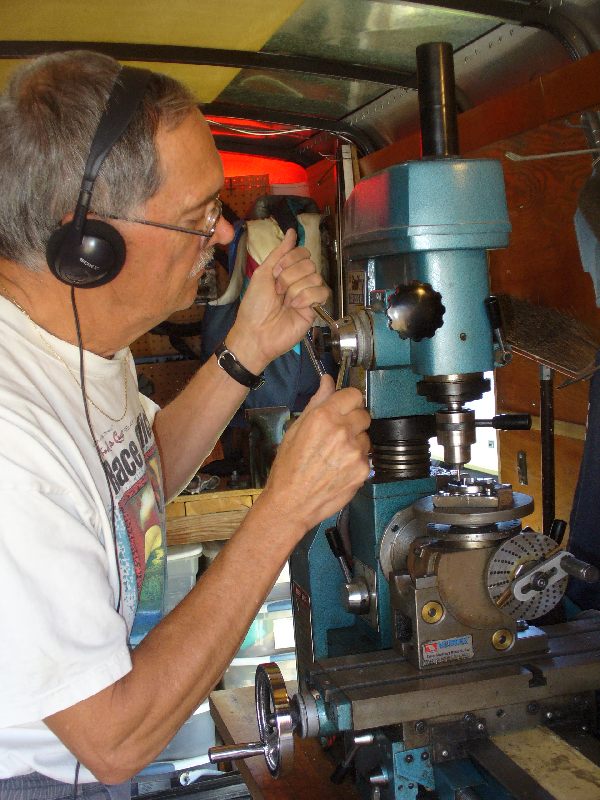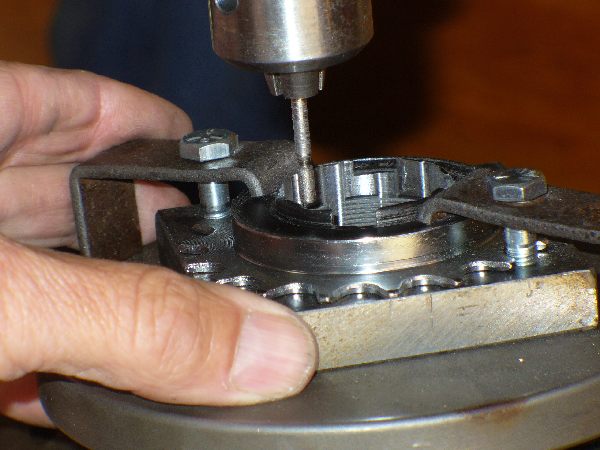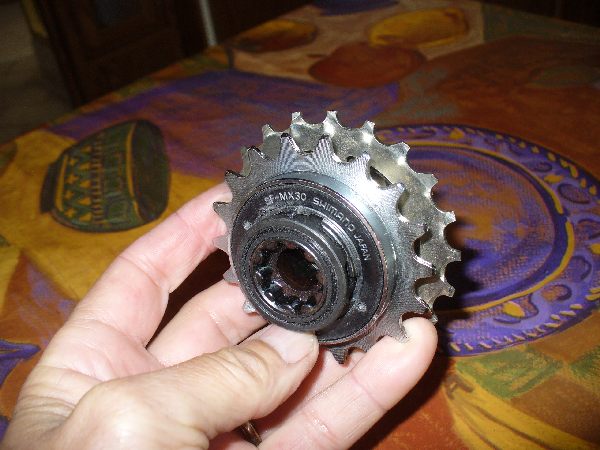The heart of the electric power assist turned out to be an elegantly simple device. Creating the design taxed my creative imagination for a couple of weeks. My wife, Judy, may have began to wonder if I had lost track of reality as I traced imaginary chain lines in the air and doodled increasingly complicated sketches of Rube-Goldberg devices on scraps of paper.
I finally stripped all but the essential components away and came up with a simple device consisting of a standard eight speed freehub and a BMX freewheel. The freehub mounts hub-side outward on the motor jackshaft and the freewheel is slotted to fit onto the splines of the free hub. A couple of the original freehub cassette gears are slipped back onto the freehub and the locknut cinched down.
Peddle power is input through the BMX freewheel. Since the freehub is mounted backwards it goes into freewheel mode as soon as you start peddling. The splines of the freehub drive the cogs and that power is output to the wheel. When the motor starts to turn the inner hub of the freehub the dogs engage the freehub drum and thus also output power to the wheel.
Either power source can drive the wheel independently of the other power source. Either power source can coast at will.
The Shimano® BMX Freewheel that I chose had a hardened steel inner raceway. I created a jig for my lathe/milling machine and needed my hardest carbide tipped tools to bore the freewheel to the diameter of the drum of the Deore® Freehub. I then set up an indexing table and cut the nine slots to fit the splines with the milling machine and a Dremel® diamond coated bit. After sixty hours of careful, tedious work I had a perfect slip fit.
I am now ready to order the rest of the components. Stay tuned for further updates.
Gary Dinsmore


